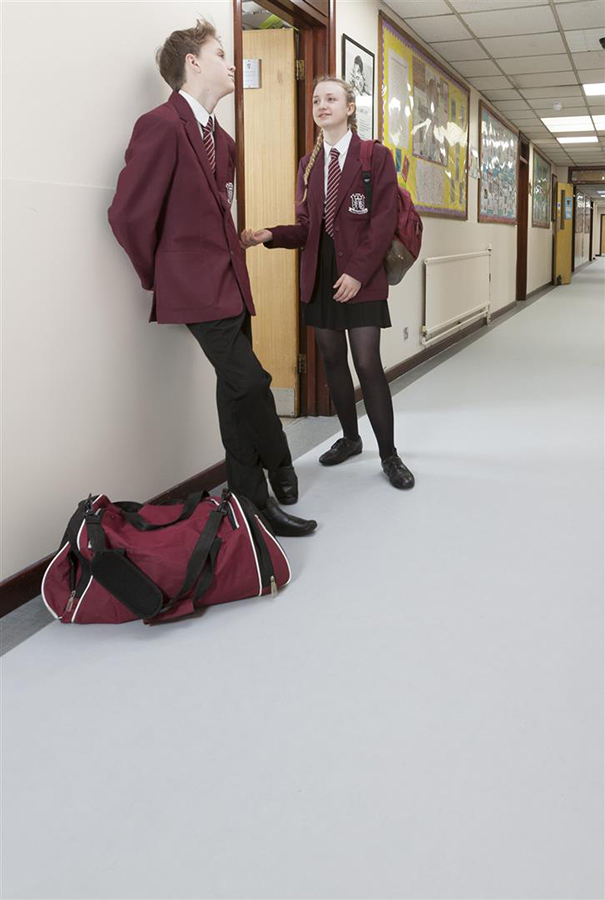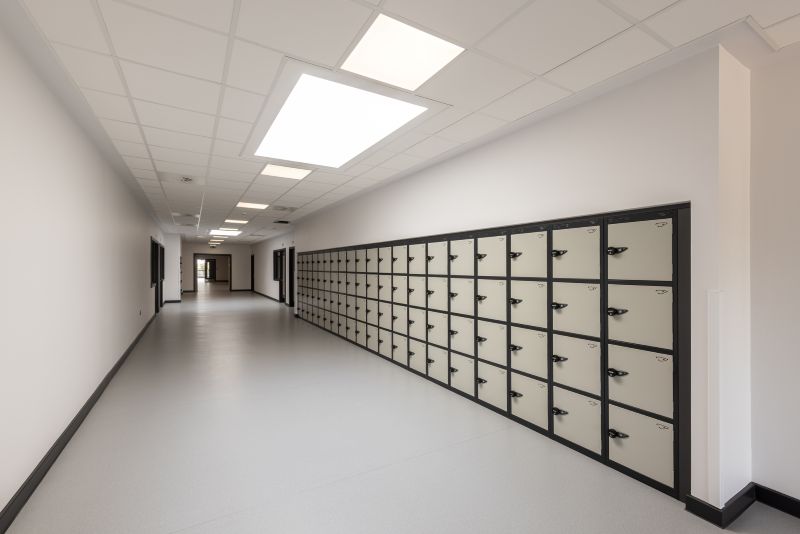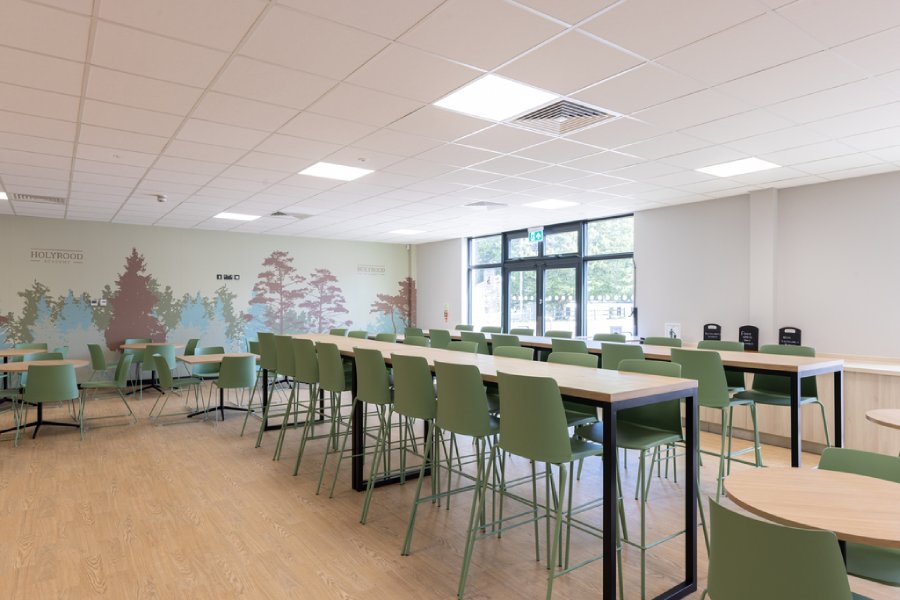By Andy Davies, Main Contractor
Business Development Consultant, Altro
When it comes to interiors for major refurbishments, specifiers often overlook valuable opportunities to improve the acoustic performance of buildings through their choice of flooring.

Acoustic flooring is often only considered for specialist zones, such as hospital operating theatres, or those which are compliance driven but the latest generation of floor coverings are capable of reducing surface generated noise in an extremely wide range of spaces and buildings. These products overcome the problems that specifiers might associate with traditional sound-absorbing floor coverings. For example, they are more resistant to wear and tear, making it possible to install them in high traffic areas. There are also options suitable for areas subjected to rolling loads, such as luggage, hospital beds or trolleys, making it possible to fit acoustic flooring in areas where only standard vinyl flooring could be used in the past. As acoustic ranges can now be considered alongside all other mainstream options when specifying floor coverings for buildings, the specifier can enhance the wellbeing of everyone who enters into and occupies any space, at any time of day. And, as the process of installing acoustic flooring is the same as for ordinary vinyl flooring, the performance of buildings can be improved significantly, simply by opting for flooring options which reduce the ambient noise inside a room and sound transmission between spaces.

So how can the flooring specifier best exploit the advantages of the latest acoustic flooring options to enhance the performance of buildings? Here are our top five suggestions.
Tip number 1: The comfort of wood without the clatter
Floor coverings featuring the textures and colours of the natural world have been a design ‘must-have’ for decades. The warmth and soft shades of wood are perfect for establishing a comfortable environment where people can feel at home. The disadvantages of real wood as a flooring material are another matter, however, especially where important safeguards such as slip resistance and the reduction of noise need to be taken into consideration. Transit of shoes across wood surfaces can cause noise to escalate rapidly, and it is particularly difficult to contain sound in buildings where architectural features and interior design choices incorporate materials with minimal sound absorbing capability, such as glass and metal.
Acoustic flooring provides the ideal alternative in this situation. Altro Wood Safety Comfort, for example, provides a wide range of wood look options in contemporary shades, with wide plank classic and rustic designs to achieve the aesthetic impact for the space. But it also has the advantage of being a 2.85mm thick acoustic flooring product delivering a 14dB sound reduction, making it ideal for areas where noise can be a problem. As its name suggests, Altro Wood Safety Comfort also offers all the performance and slip resistance you would expect from an Altro safety floor (PTV >36), reducing the risk of slipping on water to one in a million. As is it durable and stain-resistant, and comes with a lifetime sustained slip resistance guarantee, it also makes it possible to bring enhanced acoustic performance to high traffic areas.
Tip number 2: Bringing buildings up to standard
The acoustic performance of buildings is governed by a raft of regulatory requirements, such as the Building Regulations Part E: Resistance to the passage of sound, and BS EN ISO standards, impacting on numerous elements of the construction, including the walls, ceilings, floors and sub-floors.
In many zones, for example in hospitals and schools, it can be a tough challenge to achieve the required standards. Recent research carried out by John Hopkins University demonstrated that average daytime noise levels in hospitals have increased from around 57 dB(A) in the 1960s to 72 dB(A) today. Average night-time noise levels have also increased, from 42 db(A) in the 1960s, to 60 dB (A) in today’s hospitals.
Acoustic flooring products can provide a valuable means by which to achieve the required standards (which are set as a ‘minimum’ requirement) in conjunction with other sound absorption features of the building’s construction. There are two key ways of driving enhanced acoustic performance via the choice of floor covering. Firstly, as mentioned above, ranges of acoustic flooring products are available with different sound absorption characteristics. In addition to Altro Wood Safety Comfort (offering a 14dB sound reduction), Altro Orchestra is a 2.85mm thick floor with 15dB sound reduction, whilst Altro Serenade delivers a 19dB sound reduction, and is a 3.9mm thick option. Secondly, there is the option of fitting existing Altro ranges with Impact Sound Reduction underlays. The Altro 1101 and Altro Everlay B materials offer sound reductions of 18dB and 20dB respectively.

Tip number 3: Tackling the problems of noisy neighbours
In multi-storey buildings, the fashion for wood and laminate flooring in recent years has brought a significant increase in nuisance noise, from storeys above and adjacent rooms. Busy estates managers, private landlords, and social housing providers can reduce complaints considerably by offering tenants the home comforts of wood or laminate, without the associated transmission of noise between floors. The latest generation of acoustic flooring options are also suitable for high traffic communal areas such as stairs, landings and corridors, where high footfall in outdoor shoes makes noise a particular problem.
Tip number 4: Aiding concentration
In educational sites, good acoustic performance is about more than just a quiet life. The Department of Education ‘Acoustic design of schools: performance standards - Building Bulletin 93’, published in February 2015 in conjunction with the Institute of Acoustics, explains that effective control of noise in the classroom is an essential requirement. The guidelines to be met in school buildings are outlined in Requirement E4 of the Building Regulations, the School Premises Regulations, and the Independent School Standards.
About 85% of pupils with a permanent hearing impairment are now educated in mainstream schools, in response to the move towards inclusive schooling. Effective acoustic conditions are essential for these children. The guidelines point out, however, that good acoustic levels are also necessary for the wider school population. Pupils who will benefit from good acoustic design include those with speech, language and communication difficulties, children for whom English is not the first language, those with visual impairments, pupils with attention deficit hyperactivity disorders (ADHD) or those with autistic spectrum disorder (ASD), as well as those with auditory processing disorders or difficulties.
Effective choice of flooring provides valuable opportunities to improve the acoustic performance of different zones throughout the school. Altro Wood Safety Comfort flooring options have the added benefit of slip resistance, making them particularly suitable for classrooms and school corridors.
Tip number 5: Action for hearing impairment
Action On Hearing Loss estimates that more than eleven million people in the UK have some form of hearing loss (one in six of the population). The levels of hearing loss are particularly high among residents of care homes, with more than 70% of those over 70 years of age having a degree of hearing impairment. For those experiencing problems with hearing, levels of noise in the immediate surroundings have a major impact. Hard surfaces, and floor materials such as lino and tiles, provide poor acoustics, making hearing more difficult for those with impairment, and causing problems for those with hearing aids. Background noise, from speech and the movement of equipment, also create challenges.
Acoustic flooring ranges provide an ideal option, creating welcoming spaces that enhance the experiences of people with hearing impairment. In addition to suppressing noise, these flooring finishes have important hygiene advantages over carpet, and are available with slip resistance properties to enhance safety for those with limited mobility.
In conclusion, today’s buildings need to work harder than ever, and decisions around interior design need to satisfy the dual imperatives of comfort and practicality. When it comes to specifying flooring, it pays to think more inventively, to enhance the experience of those using the space.
www.altro.co.uk














